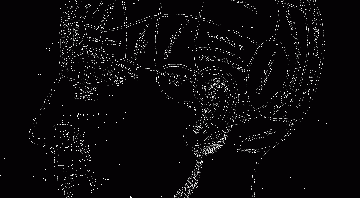Like many usability consultants I have spent hours locked in rooms with strangers saying: “What do you think about this web page?” It is boring way to earn a living especially as you often know the answers and could tell clients without asking the questions.
Alas, most clients only believe opinions about their websites when it comes from random users – not you, the expert. Luckily the industry takes Jakob Nielson’s advice on testing: five users only to establish a pattern of responses (and because it’s cheap). Although, if we were really serious, we would need 30 users to talk about the statistical significance of our results.
Some of this boredom could be avoided (and client money saved) if everyone employed the patterns which already exist in users’ heads to create more intuitive webpages and GUIs. Cognitive science, the study of mind and intelligence, enables us to understand what makes our users tick.
The human as a factor of design
We need to understand what makes our users tick because they are a key factor in the design of any system. And when you need your new design to interact with another system, you begin by trying understand that system and design around it.
By adopting this approach, we assume that humans are rational. Their logic has developed over time in order to meet the challenges of the environment in which they live. From long ago when managing their meagre sources of food and shelter to today’s information overload in the frenetic world of business, humans have developed a range of cognitive mechanisms which allows them to interact with their environment and designers should capitalise upon these cognitive interactions.
Understanding humans, in particular how they perceive, reason, and act, is not a new idea. The Ancient Greeks spent many hours philosophising about the meaning of existence and how the mind and body are related. This century, artificial intelligence researchers have wondered whether we can model the mind and if so, can machines think?
No is the answer. Machines only do what is asked of them. However, since it can be difficult to understand what the original question was, humans tend to anthropomorphise machine ‘behaviour’ and attribute human logic to them. This is know as superstitious learning, especially when the connections between actions and outcomes are misunderstood.
The use of heuristics
We make decisions all day long without gathering and analysing information. Because of our memory and the limitations of our nervous systems, there is a limit to the amount of environmental information and complexity that we can absorb and cope with. Even when we make a conscious effort to make decisions rationally, we simplify using assumptions and often work with incomplete information. So we use heuristics as a way of reducing the complexity of decision making: We associate a particular brand with quality rather than debating the pros and cons of different sports wear.
We create shortcuts and rules so that we can continue to absorb new information and reason ‘logically’ in the world.
Reasoning: deduction, induction, abduction
Philosopher Charles Pierce developed a classification system for reasoning known as deduction, abduction, and induction. Given the propositions A, B and rule R:
- A: It is raining
- B: I am wet
- R: If A then B
Then:
- deduction: A, R -> B : It is raining therefore I am wet
- induction: A, B -> R: It is raining, I am wet, the rain made me wet
- abduction: B, R ->A: I am wet therefore it is raining
Only deduction is logically sound unless we use a closed world assumption – if we don’t know about something, it is not true. This happens a lot in computing. Humans, however, know instinctively to add extra information such as problem specific details (I took a shower and that is why I am wet) and context dependency (I am indoors). However, humans do learn inductively. After 30 instances of A and B, they learn R: A -> B and think everytime it rains I get wet, I had best take a brolly. However, there are times when their rules are faulty which leads to supersititious learning.
Getting rules right often depends on how something is represented and it is no coincidence that Pierce himself defined a model for describing signs. He was interested in semiotics (the study of signs and symbols) as well as logic and reasoning.
If you torture the data it will tell you anything
The way we represent or ‘frame’ a problem directly influences the decisions people make. This cognitive bias or the psychology of choice is illustrated in the following example (taken from Universal Principles of Design, Lidwell et al).
In 2002 Russian Special Forces gassed Chechen rebels in order to rescue their 750 hostages in the Moscow Theatre. The ploy worked but the gas killed over 100 hostages. Newspapers across the globe reported the event in two ways:
- Gas Kills Over 100 Hostages
- Gas Saves 500 Hostages
The negative framing of the tragedy makes the Russians look like they handled the crisis badly. However, the positive framing suggests a satisfactory solution to an intractable problem.
This framing technique is used in marketing when vendors talk about all mobile calls free when you actually have to pay a £35 per month contract, or food as 95% fat free whilst ignoring the 5% fat or unhealthy trans fats. Politicians use the same sort of spin to hide unsuccessful outcomes of ill-judged policies.
Framing can, however, be a powerful tool. Designers frame problems differently in order to get creative and ‘think outside the box’.
Visualisation: A picture speaks a thousand words
Pictures and graphs help us more easily assimilate information and there are many different forms of visualisation. Graphical representations are powerful and can give you new insights when they are meaningful.
Statistician Edward Tufte has written several books about designing more meaningful graphics, especially when representing multiple sets of statistics. His main message is that viewers are sophisticated individuals:
…give them the greatest number of ideas, in the shortest time, with the least ink, in the smallest space…
Giving humans good graphical representations allows them to find and understand patterns on many levels. We look for patterns to make sense of the world. We interpret everything from the weather to the stories mankind has told since time began.
Joseph Campbell stated that myth and legend provided us with good patterns which guide us to live successful lives. Dropping the classics from education has led to younger generations missing out on these patterns, but they recognise them inherently from Hollywood films as there are only a finite number of storytelling possibilities.
Perception
Gestalt theory is the study of how humans recognise and interpret patterns and is the result of research carried out by German psychologists in the 1920s. Their works shows that we tend to:
- Proximity: interpret items close together.
- Similarity: group items which look similar together.
- Continuity: interpret lines as continous if they don’t bend sharply
- Closure: prefer regular shapes and complete them (inferring occlusion or interposition) if necessary.
These ideas underpin graphic design and the design of 2D graphical-user interfaces.
Vision uses context: Colour, Illusions, Adaptations
Our eyes are sophisticated pieces of machinery and apparently, 90% of our brain is devoted to vision but we still do not understand exactly how the brain works. Because of the interaction between the brain and eyes we can interpret different levels of brightness and contrast as coherent and meaningful displays. We also use other cues to interpret the world around us. We use depth perception and take our cue the 3D information to estimate distances and constancy:
- Depth from motion: when something is getting smaller or larger it is moving from or to us.
- Colour interpretation: objects are interpreted as distant or close because their colour is at the end or beginning of the spectrum.
- Perspective: converging parallel lines give us a sense of distance.
- Constancies:
- Shape: if a door is closed or ajar, we still know that it is a door.
- Occlusion: if a shape is partially covered up, we complete the shape in our minds due to Gestalt law.
- Location: if I move the rest of the room doesn’t.
There are many other examples of our ability to use extra information to interpret the world around us. Graphic artists, like Escher, have played with these cues to create illusions in their work.
Attention: limitations and allocation
Illusions may be easy to create in part because humans are constantly bombarded by signals to their senses and have limits on what they are able to interpret at any given time. German physician and physicist Helman von Helmholtz, inventor of the ophthalmoscope, discovered that the nervous system is a single communication with a limited capacity. To get people’s attention designers highlight specific information – by underlining, or using white space, so that people actively attend to the information the designers want them to see. Allocating attention works well in the theatre with spot lighting and in films with zoom lenses.
Another way is to give humans a specific task to perform. This allocates their attention and can lead to inattentional blindness – that is they are so fixated on one thing, they don’t see other things that are going on in the room. Daniel Simon’s basketball video is a great example of inattentional blindness.
We tend to fix our attention early on, so getting humans to change their attention elsewhere can be done only by interfering with their perceptions and colour and their memories. However, humans are accustomed to carry out numerous tasks at the same time – driving the car, and listening to the radio. Sometimes we don’t even remember doing certain tasks that we do routinely – like locking the door on our way to work. So in a demanding environment like the cockpit of a plane, where multitasking is essential, humans need cognitive aids to get reminded of certain crucial moments. Pilots have checklists to tick off and they also have little tags tied to various knobs and levers – to remind them to perform tasks.
Memory
Visual cues help pilots more easily because humans remember procedures better when they are described in pictures and words. This concept is known as dual encoding. It works more easily with words which are not abstract such as chair, dog, window. Abstract representations are more difficult to reforce using dual encoding because beauty, truth, freedom mean different things to different people.
Chunking down information into manageable sizes for humans helps them to retain information. Five to seven is the optimum range as discovered by George Miller. Mnemonics (from Greek times) are another way of enabling our recall.
German psychologist Hermann Ebbinghaus was the first person to make a scientific study of memory in a laboratory so that it became standard. He identified three stages in memory:
- Encoding (original acquisition of memory).
- Storage (retaining information over time).
- Retrieval (gaining information when required).
The standard experiment is to encode the information, particularly in education, and then test it later. However, we have no way of of telling if the information was encoded correctly so the test breaks down.
We have many types of memories:
- Procedural: tying shoelaces, riding a bike, walking , talking.
- Declarative: knowing facts about the world and your life and past.
- Episodic: remembering episodes of our lives that are contextually bound.
- Semantic: NaCl symbol for salt what a platypus is.
And these move from our short-term memory or working memory to our long-term memory. No one knows how long this takes, or how, or when exactly, but this information does move. We do know that when we learn, we have levels of processing to make information ‘stick’:
- Graphemically – visually.
- Phonemically – aurally.
- Semantically – meaning.
As artists like Escher tried to interfere with our perceptions, so it is easy to interfere with memory so that we can have memory illusions and false memories. We can have retroactive interference where we are eyewitnesses to an accident and then later as we discuss our memories with others we remember their information too – which can be false. And over time our memories degrade – no one knows why, it could be age, and the greatest time when we forget the most occurs just after learning.
As humans we are motivated by all sorts of factors so forgetting and remembering can be influenced by our motivations and by others’ motivations, but then that is another blog.







7 comments